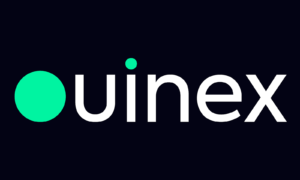In 2021, the market for disinfection equipment is anticipated to expand by over 13%, with COVID-19’s behavioral push likely to have an impact.
A series of innovations over the preceding ten years have improved the sales prospects for makers of disinfection equipment. Foam soaps, touchless toilets, and microfibers, among other previously unheard-of product categories, have started to show up in establishments from the industrial to the domestic to the commercial.
In the 1990s, the US Occupational Safety and Health Administration proposed stringent ergonomics restrictions for American workplaces, and many significant manufacturers were afraid that their tools and equipment would not comply with the new standards.
key takeaways:
By the end of 2030, the global market for disinfection liquids will be valued at US$ 25.5 billion as growth accelerates.
Although there is already a large market for disinfection equipment in the commercial sector, throughout the projection period, the industrial sector’s market is anticipated to grow at a faster rate.
Shortly, online marketplaces will be more popular than physical stores.
With rising demand in South Korea, China, and Japan, East Asia will continue to present profitable opportunities.
Due to the use of UV disinfection in so many different industries, it will continue to be widely desired.
Manufacturers of disinfection equipment are reaping significant benefits as safety precautions are increasingly adopted to stop the spread of new coronaviruses. Market growth will continue, but market participants will likely concentrate on innovation to obtain a competitive edge. To rid smartphones, currency, and masks of germs and other contaminants, several companies have already introduced UV disinfection equipment, according to a key analyst at FMI.
Production is increasing despite COVID-19
In response to COVID-19, the manufacture of UV disinfection equipment and disinfectant sprays is soaring. Opportunities in the disinfection equipment industry have forced some of the top manufacturing companies to reevaluate their portfolios at a time when other markets are having to adjust to sharp shifts in consumer behavior.
For instance, businesses like Signify Innovations India, formerly known as Philips Lighting India, have entered the disinfection industry with the introduction of a portable disinfection device based on UV-C technology.
Rising worries about viruses and germs are clearing the way for the arrival of entrepreneurs in the disinfection industry, while new coronavirus strains are upsetting the global economy. According to Dan Barnes, co-founder, and president of PhoneSoap, the company has had a 1000 percent growth spike so far this year. PhoneSoap makes products that use UV light to clean phones.
These numbers unmistakably show an increase in disinfection equipment output, a trend that is anticipated to remain throughout the projected period.
Who is Winning?
Manufacturers of disinfection equipment are concentrating on new product launches to acquire a competitive edge. To address the requirement for sanitization surrounding residences, for instance, ITC was quick to introduce zero-touch “Savlon Disinfectant Spray” in April 2020.
In order to assure effective disinfectant distribution, Garsite, a major manufacturer of aviation refuelling, has introduced a line of disinfection equipment that allows simple and no-touch chemical application.
FMI provides profiles of some of the top industry players. These companies include Trojan Technologies, Xylem, Sotera Health, Shinva Medical Instrument, STERIS Corporation, Matachana, 3M Healthcare, Heraeus, BD, Cardinal Health Inc., and others.
Segments :
Equipment Type:
- Disinfection Sprayers
- Electrostatic Sprayers
- UV Disinfection
End Use:
- Household
- Commercial
- Industrial
Distribution Channel:
- Wholesalers/ Distributors
- Online Retailers
- Independent Small Stores
- Other Sales Channels
Region:
- North America
- Latin America
- Europe
- East Asia
- South Asia
- Middle East and Africa (MEA)
- Oceania


































